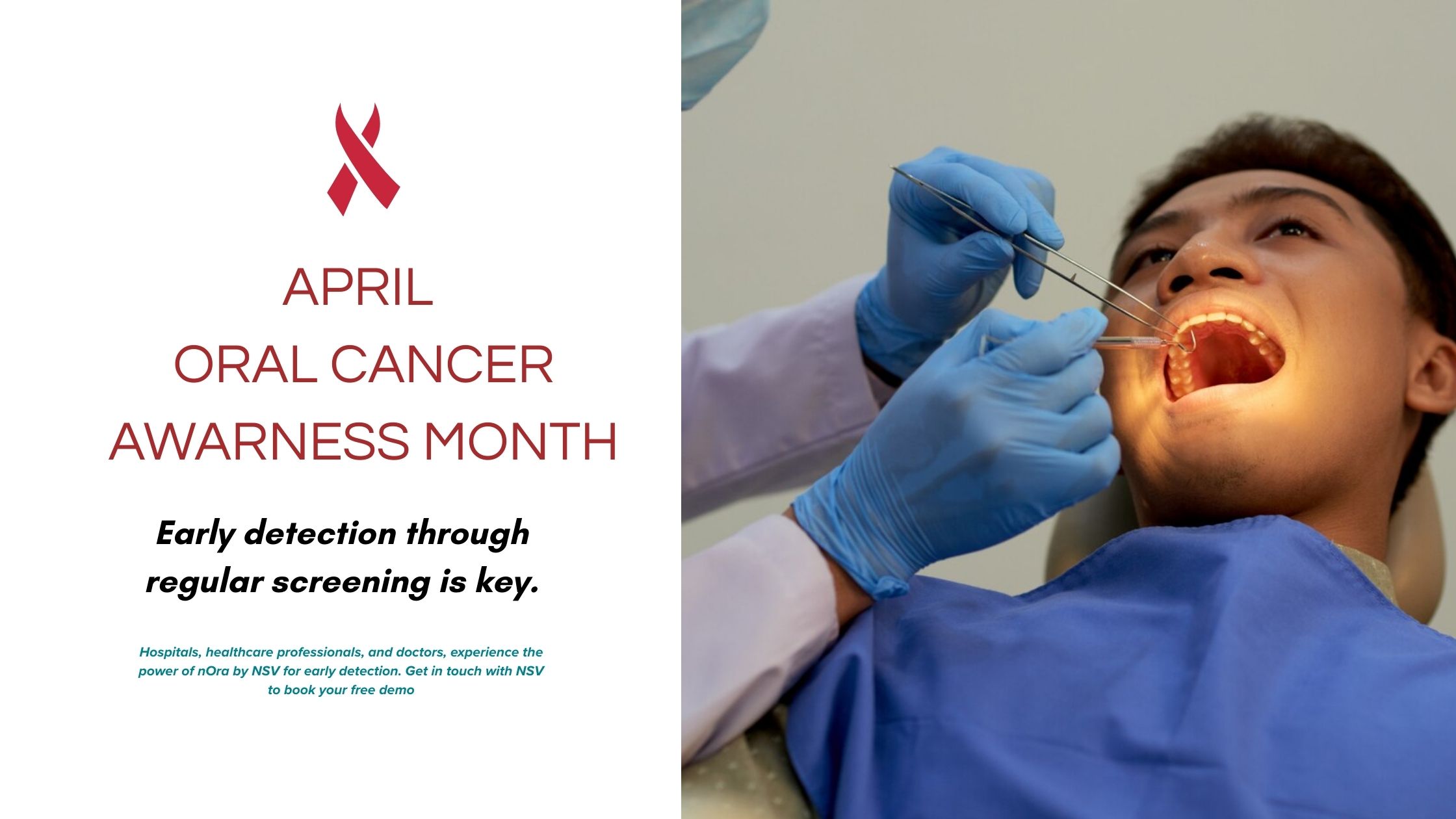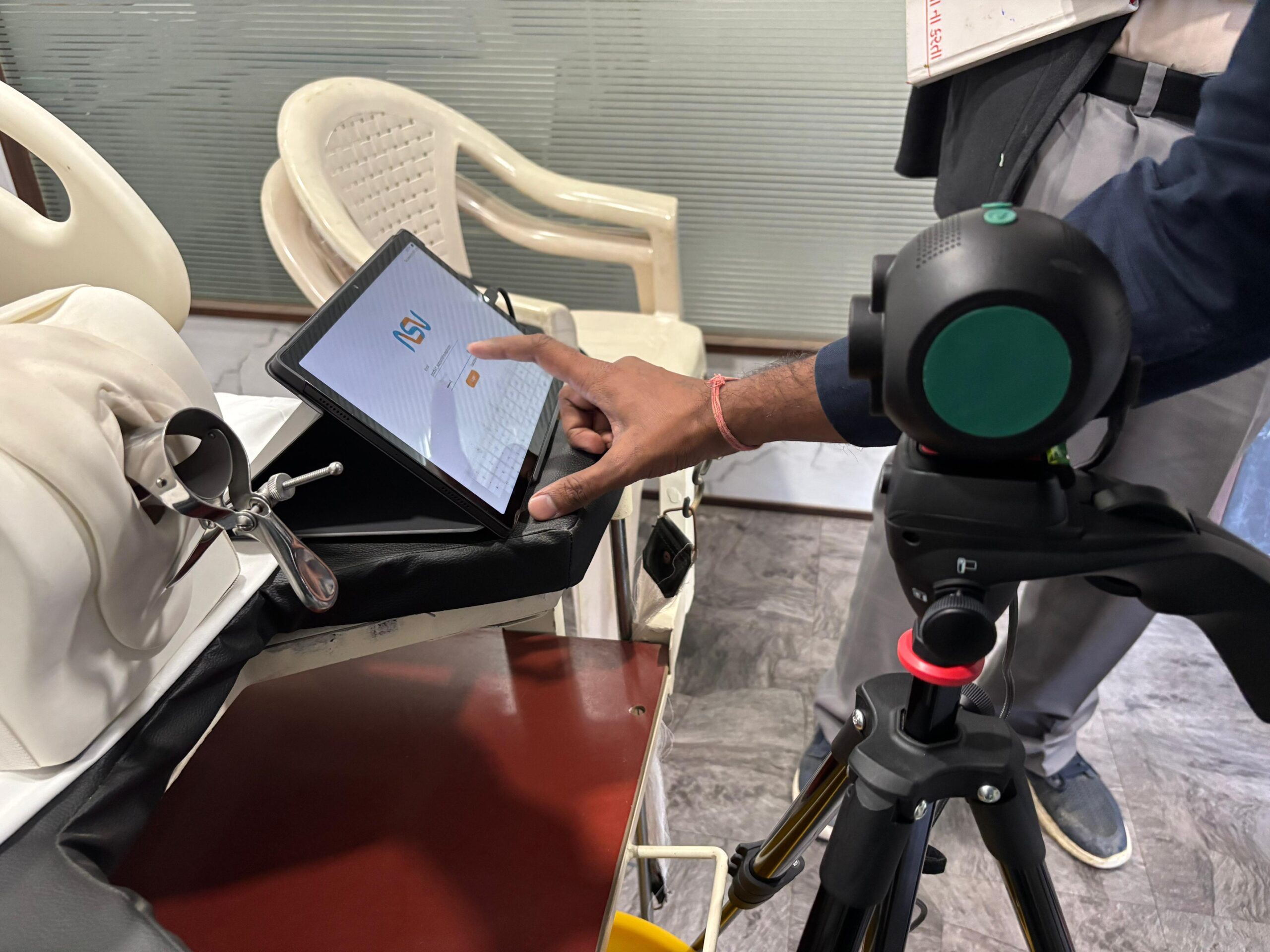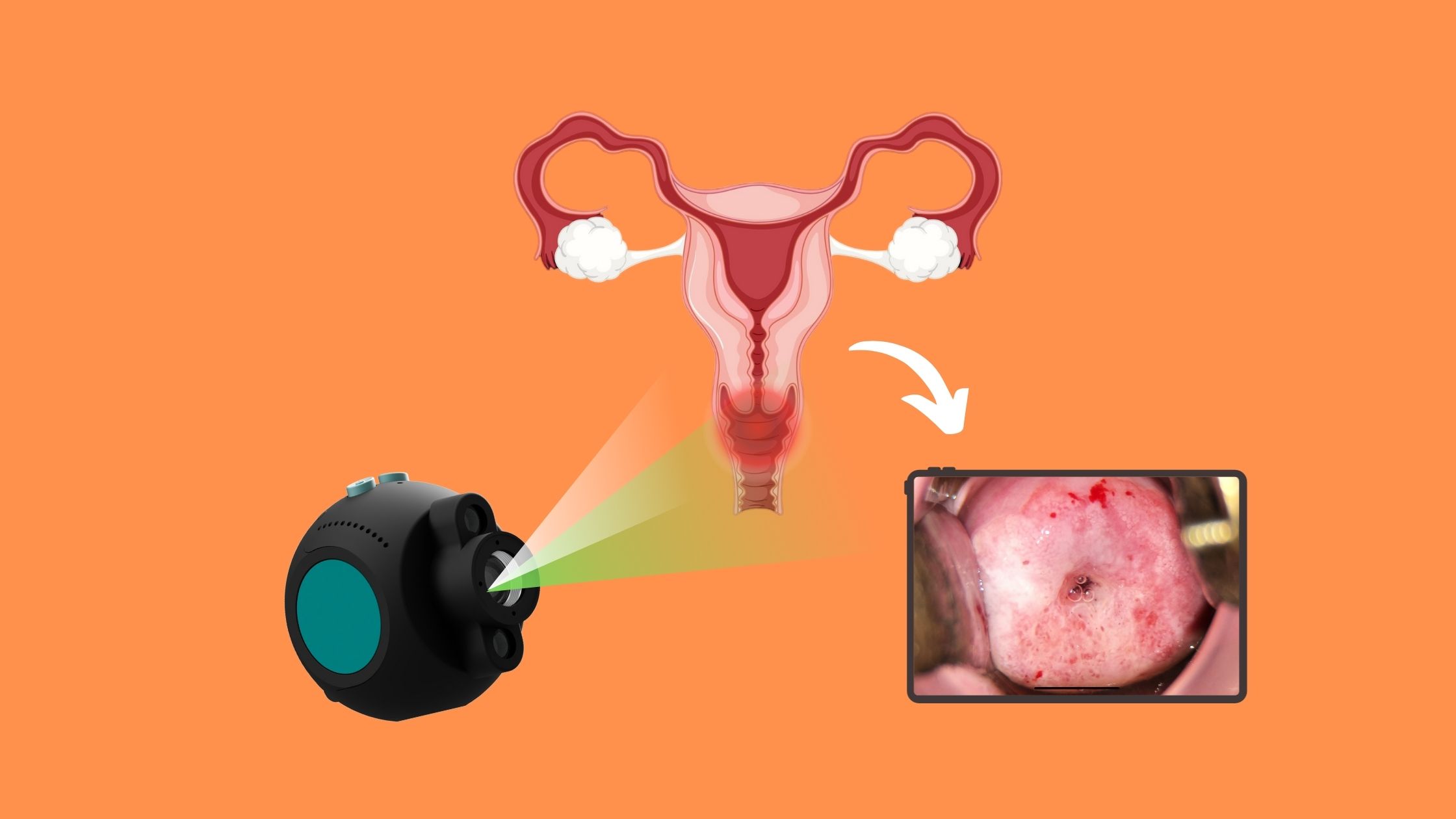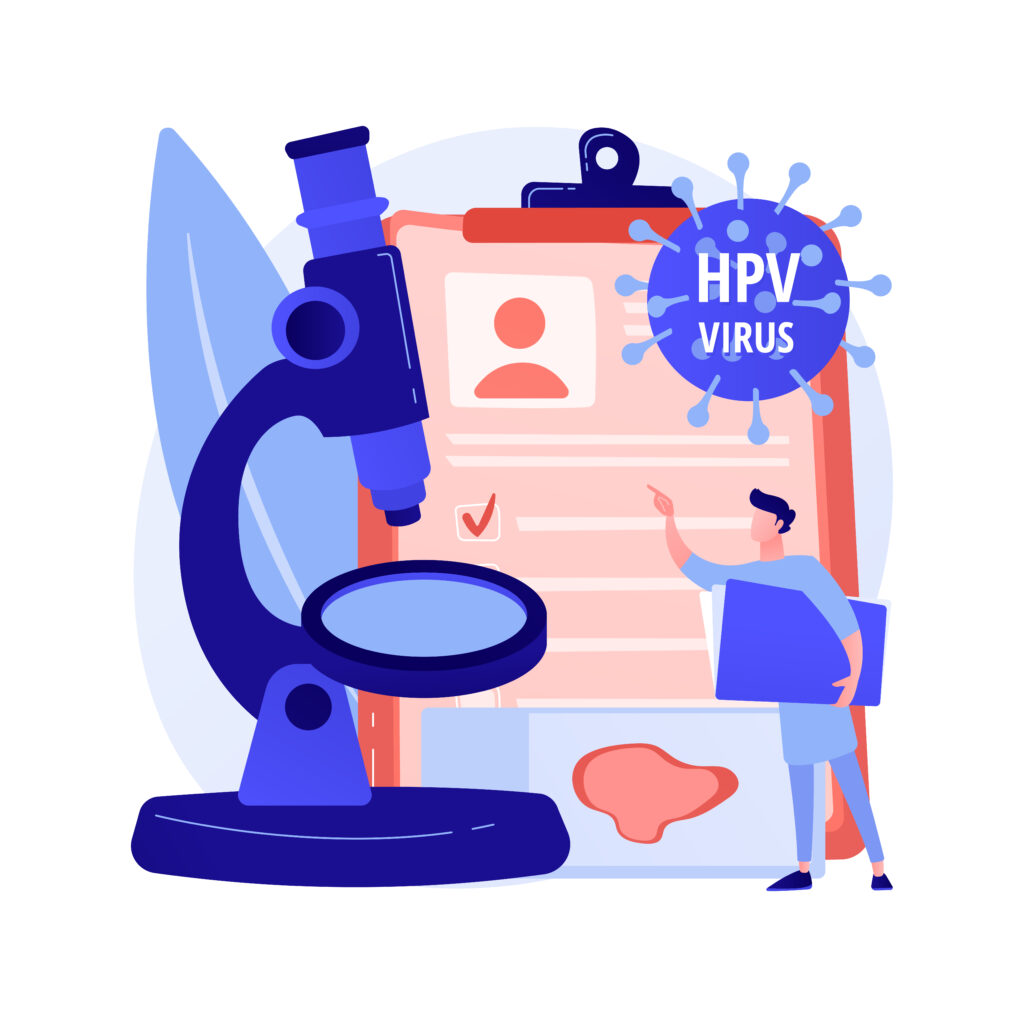
When Something Feels Wrong But You Don't Think It's Serious
We’ve all been there dealing with something small like a sore mouth or a scratchy voice. You might ignore a weird patch on your tongue or cheek because it doesn’t cause pain. Most people do. We blame it on spicy food, the weather, or brushing too hard.
But these small things can be signs of oral cancer. Oral cancer is quiet. It doesn’t hurt much initially, and the signs look like everyday mouth problems. That’s why it’s so dangerous. Many people don’t find out until the cancer is already serious. By then, treatment is more complex.
At first, oral cancer doesn’t show. It whispers. And if we’re not paying attention, we might miss it. That’s why we must discuss it. In clinics and in daily life. When more people know what to look for, they can catch it early and treat it quickly.
The Small Signs You Shouldn’t Ignore
Your body sometimes gives quiet warnings:
-
A sore that won’t heal
-
Dentures that suddenly don’t fit well
-
Jaw stiffness when opening your mouth or chewing
These don’t seem serious, so most people don’t worry. But they can be early signs of oral cancer.
Many people think these issues are just a cold or a small ulcer. But that’s the problem oral cancer often looks like a normal thing. And let’s be honest, no one wants to think it’s serious. That’s natural.
However, this type of cancer gets worse the longer it’s ignored. It keeps growing quietly. That’s why noticing small changes in your mouth is essential, especially ones that don’t go away. Getting checked doesn’t take much time. But waiting too long can be dangerous. A quick test could save your life.
It’s Not Just Smokers: More People Are at Risk Than You Think
When people hear “oral cancer,” they often think of smokers. And yes, using tobacco does increase your risk. But it’s not the only cause.
Drinking alcohol frequently also raises your risk. And here’s something many people don’t talk about enough: HPV (human papillomavirus). HPV is now a leading cause of oral cancer even in people who have never smoked.
So even young, healthy people can be at risk. The problem is that many still believe oral cancer only happens to older smokers. Because of that, people don’t get checked early. And sometimes, they feel embarrassed to talk about it.
But staying silent is dangerous. No matter your age, it’s essential to know your risk. If you use tobacco, drink often, or have HPV, you should be extra careful.
The good news is you don’t have to guess. New tools like nOra can check your mouth quickly and easily. It doesn’t hurt, and it gives you answers fast. Knowing early can make all the difference.
Getting Checked Is Now Easy and Painless
In the past, testing for oral cancer took time, special doctors, and uncomfortable procedures. But things have changed.
With tools like nOra from NSV, getting checked is quick, simple, and painless. nOra is a small, handheld device that doctors or dentists can use in clinics or health camps. No needles, no lab tests. It uses safe light technology to detect signs of oral cancer that can’t be seen with the naked eye.
Best of all, you get results right away. No waiting days or weeks. This is great for regular dental checkups or areas where finding a specialist is difficult.
Even better, it helps people get checked before they feel sick. Oral cancer screening can become a regular part of your healthcare routine, like checking your blood pressure. The sooner a problem is found, the easier it is to treat.
Thanks to tools like nOra, staying safe is easier than ever.
Let’s Talk About It—Because Staying Silent Doesn’t Help
Oral Cancer Awareness Month is a time to speak up. Too many people don’t know the signs or risks of oral cancer. But we can change that.
Start small. Talk to your friends, family, or community. Share facts online or in local groups. If you’re a healthcare provider, offer free checkups and show people how quick and easy screening is with tools like nOra.
Dentists and doctors can bring it up during regular visits. Many people don’t ask unless someone else starts the conversation.
You don’t need to be a doctor to spread the word. You need to care. Every person who learns the signs might be one less person who finds out too late.
This month, let’s make sure oral cancer doesn’t stay hidden. Help others recognize the signs. Share what you know. The more we talk, the more lives we can protect.
One Quick Test Could Save a Life
Oral cancer is serious, but it can be treated, especially if it’s found early. The real danger is how easy it is to miss. That’s why early checks are so necessary.
With nOra by NSV, clinics, health camps, and dental offices have an innovative, simple tool to find issues early. It doesn’t hurt, doesn’t take long, and gives fast answers.
This is a powerful way to protect your patients if you're a doctor or dentist. If you’re someone worried about your health, don’t wait.
If something feels off, get it checked. If you’ve read this far, take one more step:
-
Share this with a friend
-
Book a screening
-
Download a flyer
These small actions matter. During oral cancer awareness month, let’s ensure that no one ignores the signs. Use tools like nOra to catch cancer early and protect more lives.
Take Action Now
-
Don’t wait for symptoms to get worse.
-
Schedule your oral cancer screening today.
-
Bring nOra to your clinic or camp if you're a healthcare provider.
-
Share this post to raise awareness during Oral Cancer Awareness Month.
Every conversation. Every check. Every share matters. Let’s protect more lives together.
References
-
American Cancer Society. Oral Cavity and Oropharyngeal Cancer Early Detection, Diagnosis, and Staging. Atlanta: American Cancer Society; 2024 [cited 2025 Apr 15]. Available from: https://www.cancer.org/cancer/oral-cavity-and-oropharyngeal-cancer/detection-diagnosis-staging.html
-
Centers for Disease Control and Prevention. Cancers Associated with Human Papillomavirus, United States—2016–2020. Atlanta: CDC; 2023 [cited 2025 Apr 15]. Available from: https://www.cdc.gov/cancer/hpv/statistics/cases.htm
-
National Institute of Dental and Craniofacial Research. Oral Cancer. Bethesda: NIH; 2023 [cited 2025 Apr 15]. Available from: https://www.nidcr.nih.gov/research/data-statistics/oral-cancer
-
World Health Organization. Early detection of oral cancer: Evidence-based recommendations. Geneva: WHO; 2023 [cited 2025 Apr 15]. Available from: https://www.who.int/publications/i/item/9789240074335
-
Neo Sense Vector. nOra: Oral Cancer Screening Device. [Internet]. NSV Medical Devices; 2025 [cited 2025 Apr 15]. Available from: https://www.neosensevector.com/nora

What Is Colposcopy?
Colposcopy is a specialized procedure that allows doctors to examine your cervix, vagina, and vulva using a magnifying device called a colposcope. It’s typically recommended when a Pap smear or HPV test reveals abnormal results. Magnifying the cervical tissue helps doctors detect abnormalities requiring further testing or treatment.How to Prepare for a Colposcopy
Preparation is simple but essential. Your doctor may advise you to avoid sexual intercourse, vaginal creams, or medications for a day or two before the procedure. It’s also best to schedule your appointment when you’re not menstruating, as this ensures better visibility during the exam.Steps of the Colposcopy Procedure
During the procedure, you’ll lie on an exam table with your feet in stirrups, similar to a pelvic exam. A speculum is gently inserted to open the vaginal canal for a clear view of the cervix.- Applying Acetic Acid: A vinegar-like solution is applied to the cervix. This temporarily turns abnormal cells white, making them easier to spot.
- Examining with a Colposcope: The doctor uses a Colposcope to obtain a detailed, magnified view of your cervix and identify any areas of concern.
- Performing a Biopsy (if needed): If abnormal areas are detected, a small tissue sample may be taken for further analysis. While this might cause mild discomfort, a local anesthetic can help minimize pain.
Benefits of Colposcopy
Colposcopy offers several key benefits:
- Early detection of cervical abnormalities can prevent serious health issues.
- The magnified view of cervical tissue enables a precise diagnosis.
- It is a safe and generally painless experience for most patients.
Advancements in Technology: nGyn Colposcopy
Modern technology has significantly enhanced the colposcopy procedure, with innovations like the nGyn system setting new standards. The nGyn system provides:- Digital Imaging: High-resolution images for more accurate detection.
- Improved Diagnostic Accuracy: Reducing the need for unnecessary follow-ups.
- Enhanced Patient Comfort: A smoother, more efficient process that minimizes stress.
Reference:
- Massad LS, Einstein MH, Huh WK, Katki HA, Kinney WK, Schiffman M, et al. 2012 Updated Consensus Guidelines for the Management of Abnormal Cervical Cancer Screening Tests and Cancer Precursors. J Low Genit Tract Dis. 2013;17(5):S1-S27.
- Martin-Hirsch PP, Jarvis G, Kitchener H, Lilford R. Prophylactic antibiotics to prevent pelvic infection after diagnostic uterine procedures. Cochrane Database Syst Rev. 2000;(4): CD001357.
- Wentzensen N, Massad LS, Mayeaux EJ, Khan MJ, Waxman AG, Einstein MH, et al. Evidence-Based Consensus Recommendations for Colposcopy Practice for Cervical Cancer Prevention in the United States. J Low Genit Tract Dis. 2017;21(4):216-222.
- Huh WK, Ault KA, Chelmow D, Davey DD, Goulart RA, Garcia FA, et al. Use of primary high-risk human papillomavirus testing for cervical cancer screening: interim clinical guidance. Obstet Gynecol. 2015;125(2):330-337.
- Stuebs FA, Schulmeyer CE, Mehlhorn G, Ackermann J, Mehlhorn U, Renner SK. Impact of colposcopy in diagnosis and treatment of cervical intraepithelial neoplasia. Anticancer Res. 2018;38(1):345-350.
- Perkins RB, Guido RS, Castle PE, Chelmow D, Einstein MH, Garcia F, et al. 2019 ASCCP Risk-Based Management Consensus Guidelines for Abnormal Cervical Cancer Screening Tests and Cancer Precursors. J Low Genit Tract Dis. 2020;24(2):102-131.
- Wright TC, Massad LS, Dunton CJ, Spitzer M, Wilkinson EJ, Solomon D. 2006 Consensus Guidelines for the Management of Women with Cervical Intraepithelial Neoplasia or Adenocarcinoma in Situ. J Low Genit Tract Dis. 2007;11(4):223-239.
- Kitchener HC, Canfell K, Gilham C, Sargent A, Roberts C, Desai M, et al. The clinical effectiveness and cost-effectiveness of primary human papillomavirus cervical screening in England: extended ARTISTIC randomized trial cohort follow-up through three screening rounds. Health Technol Assess. 2014;18(23):1-196.
- Kyrgiou M, Koliopoulos G, Martin-Hirsch P, Arbyn M, Prendiville W, Paraskevaidis E. Obstetric outcomes after conservative treatment for intraepithelial or early invasive cervical lesions: systematic review and meta-analysis. Lancet. 2006;367(9509):489-498.
- Franco EL, Cuzick J, Hildesheim A, de Sanjosé S. Chapter 20: Issues in planning cervical cancer screening in the era of HPV vaccination. Vaccine. 2006;24:S171-S177.

What Every Woman Needs to Know About Cervical Cancer
Cervical cancer starts in the cells of the cervix, the lower part of the uterus that connects to the vagina. While it might seem far removed from everyday concerns, cervical cancer is primarily caused by the human papillomavirus (HPV), a common infection that many people contract at some point in their lives. The good news is that not all HPV infections lead to cancer. However, certain high-risk strains can cause changes in cervical cells, which, if undetected, may develop into cancer over time. Regular screening is essential—it identifies these changes before they become life-threatening.How Cervical Cancer Screening Saves Lives
Early detection is the key to successful treatment, and that’s where screenings come in. Pap smears and HPV tests are two essential tools in identifying cervical abnormalities early. A Pap smear looks for changes in cervical cells that could develop into cancer, while an HPV test identifies the high-risk strains of the virus that are most likely to cause these changes. Together, these tests form a powerful line of defense, catching potential problems before symptoms even appear.How Colposcopy Plays a Vital Role in Your Cervical Health
If a Pap smear or HPV test shows abnormal results, your doctor may recommend a colposcopy. This procedure uses a specialized instrument to take a closer look at your cervix, allowing for precise identification of any suspicious areas. Colposcopy is more than just a diagnostic tool—it’s a crucial step in cervical cancer prevention. By visualizing the cervix in detail, doctors can decide on the most effective treatment plan, ensuring no potential issue goes unnoticed. Thanks to advancements like the nGyn colposcopy system, the process is now more accurate and comfortable than ever. This innovative technology is designed to provide clearer images and better results, giving women the confidence they need to take charge of their health. 3 Key Reasons to Schedule Your Screening Today- Early Detection Saves Lives: Regular screenings catch abnormalities before they turn into cancer.
- The Process is Simple and Quick: A few minutes could protect your future.
- Empowerment Through Knowledge: Knowing your health status helps you make informed decisions.
- If you’re between 21 and 29, a Pap smear every three years is recommended.
- Between 30 and 65, you can opt for a Pap smear and HPV test every five years or continue with a Pap smear every three years.
- After 65, you may no longer need screening if your previous results were normal, but always consult your doctor.
Taking the First Step Toward a Healthier Future
Your health is worth prioritizing. Schedule your cervical cancer screening today—it’s a simple step with life-saving potential. And don’t keep this information to yourself. Please share this article with the women in your life because, together, we can spread awareness and save lives. By prioritizing cervical cancer screening, you’re not just protecting yourself but inspiring others to do the same. Let’s make cervical cancer a thing of the past—one screening at a time.References
- Arbyn M, et al. "Burden of cervical cancer and role of screening." Int J Cancer. 2020;146(4):776-786.
- Saslow D, et al. "American Cancer Society guideline for cervical cancer screening." CA Cancer J Clin. 2020;70(4):321-346.
- Wentzensen N, et al. "Use of colposcopy for cervical cancer prevention." Obstet Gynecol Clin North Am. 2013;40(2):207-220.
- World Health Organization. "Cervical cancer." WHO Fact Sheet. 2023.
- U.S. Preventive Services Task Force. "Cervical Cancer: Screening." JAMA. 2021;325(7):675-689.

What Makes nGyn a Game-Changer in Colposcopy?
nGyn uses advanced digital imaging and AI-powered tools to provide a clearer view of cervical tissues. Unlike older methods that only use optical magnification, nGyn provides high-resolution images in real-time, making it easier to spot problems. This technology also makes procedures quicker and more comfortable for patients, making it a top choice for gynecological exams.Benefits of Using nGyn for Colposcopy
- Clearer View: High-resolution images let doctors see cervical tissues in more detail.
- Smart Accuracy: AI helps recognize and map problem areas, giving more reliable results.
- Patient Comfort: Shorter, less invasive procedures make patients feel more at ease.
- Efficient Workflow: Digital tools simplify record-keeping and fit easily into existing healthcare systems.
How nGyn Improves Accuracy in Gynecological Exams
nGyn’s AI technology is a key feature. It reviews images to find minor problems that can be hard to see with the human eye. This approach gives doctors clear and detailed information, making diagnoses more accurate. Studies show that nGyn helps detect precancerous changes earlier, allowing timely treatment and better patient results.Integrating nGyn into Clinical Practice
Using nGyn in clinics Helping with :- Training Doctors: Teaching them how to use nGyn’s advanced tools effectively.
- Educating Patients: Explaining the process to help them feel comfortable and cooperative.
- Smooth Setup: Ensuring nGyn integrates easily with existing systems for a hassle-free start.
The Future of Gynecological Care with nGyn
nGyn’s potential goes beyond cervical screenings. Researchers are looking into how it can help with:- Pelvic Exams: Offering better visuals and diagnostics.
- Other Conditions: Finding issues beyond the cervix.
Conclusion
nGyn is changing how colposcopies are done, setting a new standard in women’s healthcare. Combining digital imaging and AI improves accuracy, comfort, and efficiency. Clinics worldwide should consider adopting nGyn to provide better care and outcomes for women.References
Smith, J. (2023). Advancements in Colposcopy Technology. Journal of Gynecological Imaging, 17(2), 45-58. Vancouver: MedTech Publications.
What is colposcopy?
Colposcopy is a technique used to examine the cervix and other organs in the pelvic region. During a colposcopy, a doctor will examine the cervix using a magnifying instrument called a colposcope. This procedure is performed with the cervix covered with a testing solution called a colposcopic dye. The dye will stain the cells and make them easier to visualize. The colposcopic dye helps to check any more pronounced abnormalities, such as lesions. A colposcopy may be performed at the same time as a Pap.What is a Pap test?
A Pap test checks for cell changes that may turn into cervical cancer. A colposcopy is performed simultaneously with a Pap test to look for changes on the cervix that can’t be seen with the naked eye.What causes HPV?
HPV is a virus genus that affects both men and women equally. The virus usually causes no symptoms, and most people are unaware they have it. A person can have HPV for years and not know it. HPV can induce alterations in the cervix's cells, vulva, vagina, anus, and other body areas. These changes can lead to cancer over time. The types of HPV that cause warts on the hands and feet or rough spots on the lips differ from those of HPV that cause abnormal cell changes in the cervix. Not all types of HPV cause changes in cells. Many patients infected with the virus are unaware that they are infected, and their bodies fight off the infection. Some types of HPV are more likely to cause cancer than others. HPV 16 and HPV 18 are the two types most likely to cause cancer. HPV can cause cervical cancer in two ways: precancerous lesions and cervical cancer.
What is the purpose of a colposcopy?
A colposcopy is used to see the cervix and other areas of the pelvic region with a colposcope. It is a diagnostic procedure used to investigate abnormalities of the cervix and vulva. During a Pap test, the cervix and other parts of the pelvic area may seem abnormal. Still, more testing is required to identify whether these changes are due to cell abnormalities or irregularities on the mucosal surface. A colposcopy allows a doctor to examine the cervix and other areas of the pelvic region at a much higher magnification than a Pap test. Allows for better identification of abnormal cells and their locations. The colposcopy is also used to identify any microabrasions that may have occurred during a Pap test. During a Pap test, the cervix is either scraped or a small brush is used to collect cells. This can cause microabrasions on the cervix. Identifying them helps determine the best follow-up treatment.What to expect during the colposcopy appointment
Before the colposcopy begins, the woman may be asked to change into a gown and empty her bladder. The woman will most likely be asked to lie on her back with her hips elevated and her knees slightly open. The doctor may apply a unique solution known as an acetic acid solution to help image any abnormal areas. This solution is applied to the cervix using a cotton swab. The answer may sting or burn. It may temporarily turn the room a shade of white or yellowish-white. A colposcopy is a unique magnifying instrument that uses light. The doctor will use it to look at the cervix and other areas of the pelvic region. The woman may be asked to cough or bear down to better view the cervix. The doctor may take a sample of cells from the cervix. This sample is sent to a laboratory for testing.How to prepare for a colposcopy
Women should do their best to stay hydrated and eat healthy before a colposcopy. This can make the procedure less uncomfortable and speed up the healing process. Before the colposcopy, women should take a warm bath or use a warm heating pad to help relax the pelvic area. Some women find it helpful to reduce discomfort by taking a mild pain reliever or anti-inflammatory medicine before the colposcopy. Cleaning the vulva and surrounding area is recommended before the colposcopy. Wiping the area with warm water and a mild soap should suffice. It’s also a good idea to avoid wearing deodorant or scented hygiene products, especially if the skin is broken. Pregnant women should consult with their doctor about when to get a colposcopy.How to interpret results from a colposcopy
The results of a colposcopy may be reported as positive or negative. The doctor may recommend a repeat colposcopy in a few years if they are negative. This is an excellent time to ask about HPV vaccination. Suppose the results are positive (i.e., abnormal cells identified). In that case, the doctor may recommend the following.Follow-up treatments:
A follow-up colposcopy: If the abnormal cells were located on the cervix's surface or walls, the doctor might perform a follow-up colposcopy to investigate the findings further. If the abnormal cells were inside the cervix, the doctor might perform a cone or LLETZ biopsy. A cone biopsy: During this procedure, the doctor uses a small scalpel to remove the abnormal areas on the cervix. This minor procedure can be performed in the doctor’s office. The doctor may use a local anesthetic or prescribe pain medication to ease discomfort. LLETZ biopsy: During this procedure, the doctor uses a narrow wire loop to remove the abnormal areas on the cervix. The coil is heated to destroy the cells. This procedure is also performed in the doctor’s office and can be done with local anesthesia.Possible follow-up treatments for abnormal colposcopy results
If the colposcopy reveals abnormal cells, the doctor may recommend a follow-up treatment to remove the cells. Women who have had a colposcopy and have a positive result should consult their doctor to explain the findings and discuss the next steps toward a healthy cervix. Women with an abnormal Pap test or who have had a colposcopy and are found to have abnormal cells may be prescribed a short course of antibiotics. This reduces the risk of infection, which can cause the abnormal cells to multiply and spread. Women with positive colposcopy results may be prescribed a short course of HPV medications.What to do after a colposcopy
After a colposcopy, the tissue may look inflamed or bruised. The patient should keep the area clean with warm water and use a pad to catch any discharge. If the doctor performs a biopsy, the woman may experience pain and discomfort in the pelvic region. Taking over-the-counter pain medicines as prescribed can help manage discomfort. taking lots of rest and drinking plenty of water is essential for the body's recovery. Some spotting or bleeding might occur if the biopsy is performed on the cervix. This is common and will vanish in a few days or a week. It’s essential to keep the area clean and avoid sexual activity until the bleeding subsides.Colposcopy risks
While many women have a colposcopy with no complications, there is always a small risk of infection, bleeding, or injury to the urethra, bladder, or other nearby organs. In addition, the disease risk is higher when an acetic acid solution is used.nGyn Cervical Screening System:
The nGyn colposcope assists in obtaining accurate cervical diagnoses. Its prescribed workflow reduces subjectivity and variability in colposcopies. AI-powered diagnostics act as guidelines for decision-making, enhancing the accuracy of the procedure.References:
- Cooper DB, Dunton CJ. Colposcopy. In: StatPearls [Internet]. Treasure Island (FL): StatPearls Publishing; 2023 [cited 2023 Oct 10]. Available from: http://www.ncbi.nlm.nih.gov/books/NBK564514/
- Hospitals M. Best Hospitals in India | Medicover Hospitals. [cited 2023 Oct 10]. Colposcopy: a comprehensive guide for understanding. Available from: https://www.medicoverhospitals.in/articles/everything-you-need-to-know-about-a-colposcopy
- Burness JV, Schroeder JM, Warren JB. Cervical colposcopy: indications and risk assessment. Am Fam Physician. 2020 Jul 1;102(1):39–48.

